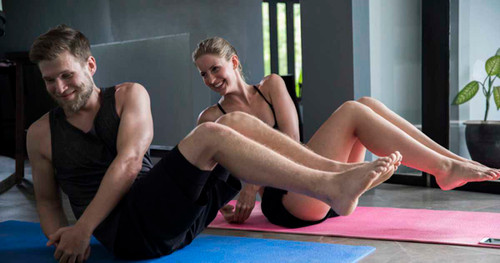How Various Forms of Exercise Impact Chafing
Posted by Jack Miller on 28th Jan 2024
Exercise is a cornerstone of a healthy lifestyle, but for many, the accompanying chafing can be a discouraging side effect. Different forms of exercise subject the body to various movements, intensities, and environments, influencing the likelihood and severity of chafing. In this blog post, we'll explore how activities such as running, cycling, and swimming impact chafing, and share tips to keep chafing at bay for each.
Running: The High-Impact Challenge
Running, a popular cardiovascular exercise, often involves repetitive, high-impact movements that can lead to intense friction, especially in areas like the inner thighs, underarms, and nipples. The constant rubbing of skin against skin or clothing can result in chafing, manifesting as redness, irritation, and sometimes painful blisters.
Chafing Solutions for Runners
Wear moisture-wicking and seamless clothing to minimize friction.
Apply anti-chafing balms or creams to vulnerable areas before a run.
Invest in quality, snug-fitting running gear to reduce excess fabric movement.
Cycling: Saddle Up, but Watch for Friction
Cycling, whether on a road bike or stationary cycle, introduces a unique set of challenges for chafed skin. The repetitive motion of pedaling, combined with the pressure exerted on the perineum area by the saddle, can lead to friction and discomfort, commonly known as saddle sores.
Chafing Solutions for Cyclists
Choose well-padded and properly fitted cycling shorts to reduce friction.
Apply chamois cream to the chamois (padding in cycling shorts) and areas prone to chafing.
Stand up or shift positions periodically during long rides to relieve pressure on sensitive areas.
Swimming: The Low-Impact Respite
Swimming, with its low-impact nature, may seem like a chafing-free zone, but water-related chafing can still occur. The constant motion of limbs against water, coupled with wet fabric, can create an environment conducive to skin irritation, particularly around the neck, underarms, and bikini line.
Chafing Solutions for Swimmers
Choose swimsuits made from quick-drying, breathable fabrics.
Rinse off after swimming to remove chlorine or saltwater residue that can contribute to chafe.
Use body glide or petroleum jelly in areas prone to friction, even if you don't feel immediate discomfort.
Weightlifting: Lift Smart to Avoid Chafe
Weightlifting involves a different set of movements, but the potential for chafing is still present, particularly in areas where the skin folds or where workout gear may rub against the body during repetitive motions.
Chafing Solutions for Weightlifters
Opt for moisture-wicking and well-ventilated workout clothing.
Ensure a proper fit for any supportive gear, such as belts or knee sleeves, to avoid unnecessary friction.
Consider using anti chafing treatment products, especially if performing exercises that involve repetitive motions.
While exercise is crucial for maintaining a healthy lifestyle, it's essential to address the potential for chafing based on the specific demands of each activity. By understanding how different forms of exercise impact the skin, individuals can proactively implement strategies to prevent chafing and continue their fitness journey with comfort and confidence. Whether you're a dedicated runner, cyclist, swimmer, or weightlifter, taking steps to minimize friction and moisture will help you stay focused on the benefits of exercise rather than the discomfort of chafing.

